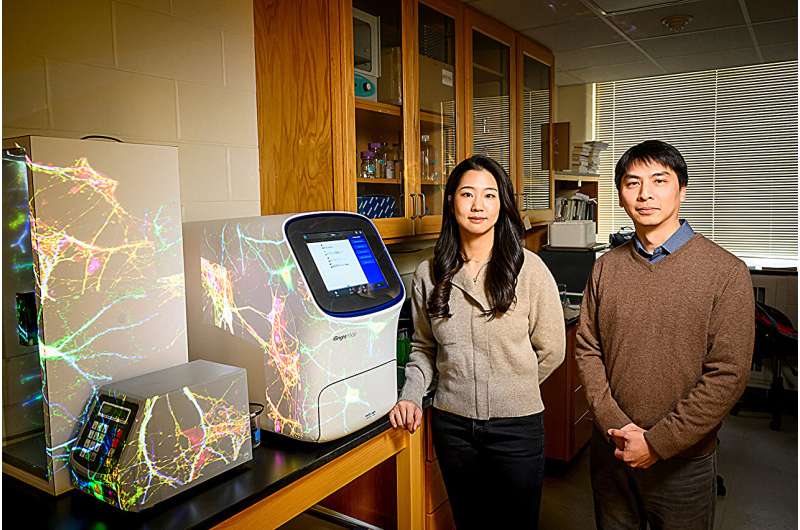This article has been reviewed according to Science X's editorial process and policies. Editors have highlighted the following attributes while ensuring the content's credibility:
fact-checked
trusted source
proofread
Earliest-yet Alzheimer's biomarker found in mouse model could point to new targets

A surge of a neural-specific protein in the brain is the earliest-yet biomarker for Alzheimer's disease, report University of Illinois Urbana-Champaign researchers studying a mouse model of the disease. Furthermore, the increased protein activity leads to seizures associated with the earliest stages of neurodegeneration, and inhibiting the protein in the mice slowed the onset and progression of seizure activity.
The neural-specific protein, PSD-95, could pose a new target for Alzheimer's research, early diagnosis and treatment, said study leader Nien-Pei Tsai, an Illinois professor of molecular and integrative physiology.
Tsai's group studies mice that make more of the proteins that form amyloid-beta, which progressively aggregates in Alzheimer's disease to form plaques in the brain that hamper neural activity. However, in the new work, the group focused on a time frame much earlier in the mouse lifespan than others have studied—when no other markers or abnormalities have been reported, Tsai said.
"We were thinking, if we can catch anything that is happening early enough, maybe we can find a way to diagnose the disease earlier or slow down the progression," Tsai said. "We know that Alzheimer's is irreversible. But if we can slow down the progression or even delay the onset of the disease, we can improve the quality of life for patients."
While watching early neural development, first in neuron cultures and then in live mice, the researchers saw an elevation in PSD-95 levels. The PSD-95 protein's job is to attract and pull other receptors to the synaptic surface—the space where two neurons pass signals to one another.
"Our data suggests that the elevated PSD-95 is contributing to hyperexcitability in the brain. That's a common phenotype is some of the early stages of Alzheimer's disease patients: They tend to have hyperexcitability or elevated seizure susceptibility in the brain, preceding and exacerbating the neurodegeneration that follows," said Tsai, who also is affiliated with the Beckman Institute of Advanced Science and Technology at the U. of I.
To confirm that increased PSD-95 was a driving force behind the seizure activity, the researchers inhibited PSD-95 in a mouse cohort. They saw reduced receptor activity at the synapse, fewer seizures in the mice, and reduced mortality from seizures.
"Our findings show that PSD-95 is a critical contributor to the hyperexcitability in the earliest stages of Alzheimer's. So, we think that PSD-95 can be an early biomarker to indicate that a patient could have Alzheimer's disease or elevated seizure susceptibility. In terms of treatment, antibody inhibitors for PSD-95 could be useful in the early onset of Alzheimer's, with more clinical study."
The group published its findings in the journal EMBO Reports.
The researchers hope to partner with clinical research teams to determine whether their findings in mice correlate with samples from human patients. They also plan to study other receptors that PSD-95 interacts with on the synaptic surface to see if it plays a role in other symptoms of the disease or stages of its progression.
"For example, the NMDA receptor has been shown to contribute to neural cell death in Alzheimer's disease. So we're trying to see whether by inhibiting PSD-95, we also can inhibit this particular NMDA receptor to slow down cell death."
More information: Yeeun Yook et al, Hyperfunction of post-synaptic density protein 95 promotes seizure response in early-stage aβ pathology, EMBO Reports (2024). DOI: 10.1038/s44319-024-00090-0




















